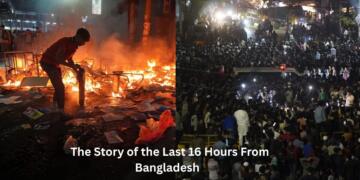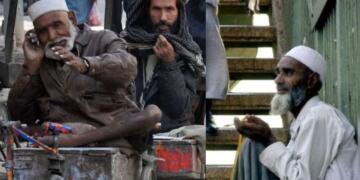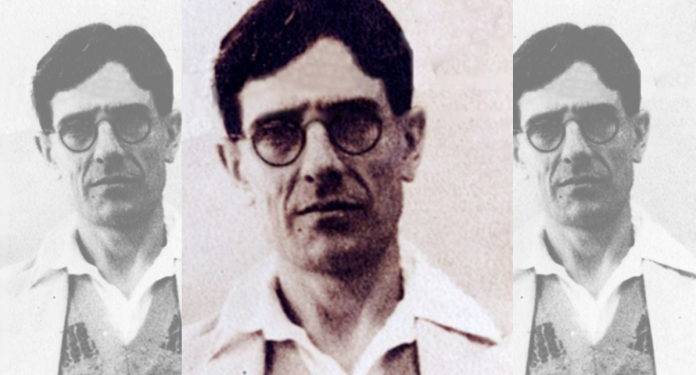Two days ago, the know-it-all intellectual of India, Ramachandra Guha, who is a self-proclaimed expert of subjects ranging from cricket to environment and history, tweeted a quote about cultural backwardness of Gujarat by British author Philip Spratt.
“Gujarat, though economically advanced, is culturally a backward province… . Bengal in contrast is economically backward but culturally advanced”. Philip Spratt, writing in 1939.- tweeted Guha.
"Gujarat, though economically advanced, is culturally a backward province… . Bengal in contrast is economically backward but culturally advanced".
Philip Spratt, writing in 1939.— Ramachandra Guha (@Ram_Guha) June 11, 2020
Guha’s bigotry generated sharp reactions from leaders across the political spectrum. Gujarat CM Vijay Rupani called people like Guha “elites who want to divide India” and Congress leader Ahmed Patel also called the statement about cultural backwardness of Gujarat “ill informed”.
Earlier it was the British who tried to divide and rule. Now it is a group of elites who want to divide Indians.
Indians won’t fall for such tricks.
Gujarat is great, Bengal is great…India is united.
Our cultural foundations are strong, our economic aspirations are high. https://t.co/9mCuqCt7d1
— Vijay Rupani (Modi Ka Parivar) (@vijayrupanibjp) June 11, 2020
This is an ill informed statement
From Kutch to Vapi & from Shyamlaji to Dwarka,Gujarat’s culture is built on striking diversity but united through indomitable entrepreneurial spirit
Every culture has it’s unique greatness,backwardness is our failure to understand this fact https://t.co/IKCLOnf85I
— Ahmed Patel Memorial (@ahmedpatel) June 11, 2020
Guha’s hatred for PM Modi and BJP is well known and the hatred has gone so far that he now hates even Gujarati people. He did not need to tweet such a statement by any author in the very morning at 8 AM in ‘aaj kuch toofani karte hai’ mode to make this hatred well-known. People already assume and expect the worst from intellectuals like Arundhati Roy and Ramachandra Guha and get disappointed.
But, through his tweet, Guha gave us an opportunity to talk about Philip Spratt. Spratt, who turned from a Communist activist to a staunch right winger, lived an interesting life, and made 180 degree turn on the political spectrum.
Spratt was born to a schoolmaster named Herbert Spratt and Norah Spratt, a housewife, in September 1902, in southern London. Raised as Baptist, Spratt later joined Church of England, and continued to attend church despite being irreligious.
“By the age of 17 I had a fair knowledge of nineteenth-century physical science, and I read a little on my own in biology. On Sunday evenings after church I used to take a fast walk round the neighbourhood, and for some months on these walks I argued with myself about science and religion. I decided quite definitely that the religious theory of things was unsound. But I remember no ‘conflict’ or emotion over my rejection of religion. I kept it entirely to myself, and I still attended church, and continued to do so till I went to the university,” wrote Spratt on his religious beliefs.
A brilliant student, Spratt won a scholarship in 1921 to attend Downing College at University of Cambridge, which used to be a training centre of Indian Civil Servants back then. At Cambridge, Spratt joined University Labor Club- a left-leaning debate forum, many of whose members- including Spratt- later joined Communist Party of Great Britain (CPGB).
At university, Spratt explored subjects like Philosophy, Psychology, and Anthropology, despite being a Mathematics tripos student. “I was in no mood to devote myself to my proper studies, or to associate with the dull dogs who stuck to theirs. I dabbled in literature and philosophy and psychology and anthropology,” wrote Spratt about his university years.
In 1924, Spratt graduated in Mathematics tripos but continued to work for the Communist party, which send him to India two years later, in 1926. In India, he travelled throughout the country and looked after the functioning of Communist Party of India, and brought many trade unions under its fold.
In 1929, he was arrested in Meerut Conspiracy case and sentenced to 12 years of jail. However, on an appeal, the British government in India released him 1934. He became more of a Gandhian after being released from jail and was active in leftist political and intellectual activist till mid 1940s.
However, post-World War II, slowly he started leaning towards Capitalism and United States. He became chief editor of MysIndia, a pro-America and pro-Capitalism magazine and held the post till 1964.
Later he moved to Tamil Nadu, to become editor of Swarajya, India’s foremost right wing magazine and mouthpiece of C Rajgopalachari’s Swatantra Party- the sole party which supported market oriented economy back then.
Koenraad Elst, a well-known Indologist, described Spratt as “an English Comintern agent, had founded the Communist Party of India in 1926. After spending some time in prison as a convict in the Meerut Conspiracy case (1929), Spratt had come under the influence of Mahatma Gandhi, and ended as one of the best-informed critics of Communism” in India’s only communalist: A short biography of Sita Ram Goel. Spratt’s book, Blowing up India: Reminiscences of a Comintern Agent by Philip Spratt (1955), was published by Sita Ram Goel, India’s foremost rightwing ideologue.

































